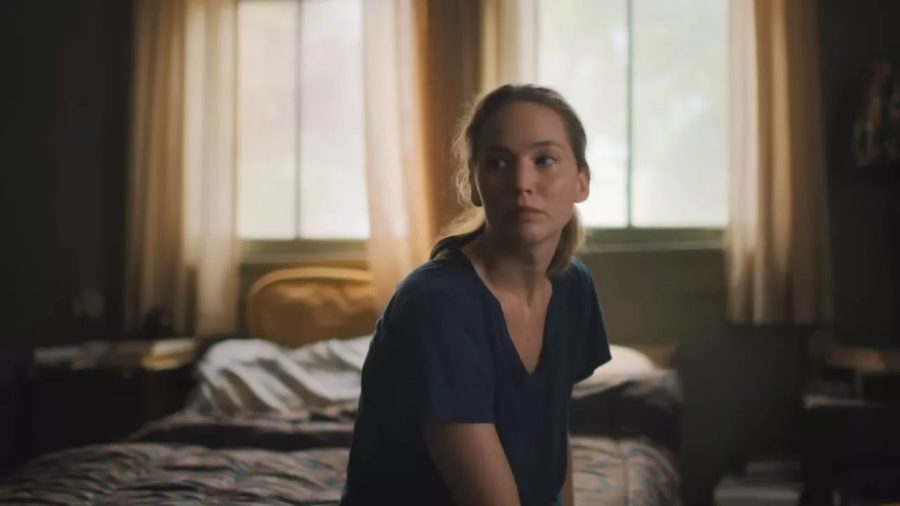On October 17, filmmaker Lila Neugebauer and I sat down to discuss her debut film Causeway, featured in the Chicago International Film Festival. The project is not only her directorial premiere but also marks Academy Award–winner Jennifer Lawrence’s return to acting following a two-year hiatus.
Causeway tells the story of Lynsey (Jennifer Lawrence), an American veteran returning home from Afghanistan after suffering a debilitating brain injury. With the help of a kind caretaker (Jayne Houdyshell), Lynsey relearns how to walk and rehabilitates her memory. Afterward, she moves back into her childhood home in New Orleans, where her mother, Gloria (Linda Emond), lives. There, Lynsey must confront her current trauma and the memories of her distressing childhood. During this process, she befriends James (Brian Tyree Henry), a fellow New Orleans native likewise haunted by his past. The two form a friendship that helps them navigate their pain and eventually begin healing.
The heart of Causeway is Lynsey and James’s friendship. They are two strangers who, despite having very different life stories, understand each other’s pain. The strength of this unlikely bond is sustained by the strong chemistry of actors Brian Tyree Henry and Jennifer Lawrence. In reference to Henry and Lawrence, director Neugebauer said the two “felt deeply connected to their characters’ inner lives and deeply connected to each other as actors and as people.” Speaking of her collaboration with the actors, Neugebauer explained, “I would say [in] our conversations, the three of us were hugely instrumental in developing [a] shared understanding of the dynamics of [Lynsey and James’s] relationship in the film [and] how it unfolded.”
Another standout performance in Causeway comes from three-time Tony nominee Linda Emond, who plays Gloria, Lynsey’s mom. Although Gloria’s behavior is consistent with that of a thoughtless person, Emond’s delivery infuses Gloria with enough humanity that the audience can understand that she still loves Lynsey. However, she is unprepared to translate that love into action. I asked Neugebauer about the first time Gloria appears on screen, with her face and body obscured by the dark lighting of Lynsey’s room, and who from then on only shows up during nighttime scenes. Neugebauer explained, “This is not a movie that traffics heavily in backstory or exposition. So I think a lot of our work on [Gloria and Lynsey’s] scenes had to do with how to mine what are fundamentally very suggestive scenes for as much emotional information as we could summon…And of course, how you frame someone is always communicating a great deal about that character…It is not incidental that we meet her in a kind of chiaroscuro context.”
Talking about the film’s location, Neugebauer praised New Orleans. She stated, “It’s an incredible city. I mean, so many American cities are like other American cities; nothing is like New Orleans. It is a place of singular cultural history and tradition. Vibrant, vivid, dynamic; an incredibly resilient city.” Nevertheless, Causeway doesn’t portray New Orleans in a typical fashion. There is no montage of the popular landmarks or mentions of its widely known traditions. Instead, we get a look at the street and houses Lynsey grew up next to. Neugebauer expressed that she wanted to paint a picture of New Orleans that “felt intimate, that felt private, and felt personal to the people who actually live there.”
As a first-time film director, Neugebauer said that she encountered many surprises and learned a lot about the job. She explained that “as the director, you are there day in and day out through a changing landscape of collaborators and creative processes and mechanisms, and you carry it with you. You can read about that and talk to filmmakers about it, but I think you have to live it, to really reckon with the kind of resilience that that requires, and to be in touch with both the responsibility of that and the joy, the thrill of it.”
Toward the end of our conversation, I asked Neugebauer if she had advice for up-and-coming artists. “How can someone tell they have found an idea worth exploring,” I asked. Neugebauer took a beat and replied, “It’s a beautiful question. And I want to own that. And particularly as a first-time filmmaker, I feel very humbled by the proposition that I might have anything to offer.” She continued, “What I would say is that first and foremost, is [the story] worth telling to you? Does it matter to you? If you’re going to dedicate your energy to sharing it with others, what are the stakes of telling that story for you?”
Increasingly, Neugebauer believes that “in the capitalist machinery of our culture, it can be very easy to look to external metrics for what defines our success, or what might be worth our time.” Instead, Neugebauer encourages artists to get motivation from themselves and from those they care about.
Causeway is a film about confronting trauma in companionship. While it seems important to talk about the past, the film doesn’t get stuck in it. Lynsey and James’s stories are unique, but their struggles and desire to heal will resonate with audiences everywhere. Neugebauer shared with me her desire for the issues explored in Causeway to be timeless. She hopes that the film “speaks backward and forward in time.” Speaking exclusively about Lynsey’s struggle as a veteran returning home, Neugebauer wished that society “might live to a moment in which we stop sending people to fight [in] wars.”
“Causeway,” rated R, was released exclusively in select theaters and on Apple TV+, November 4.









